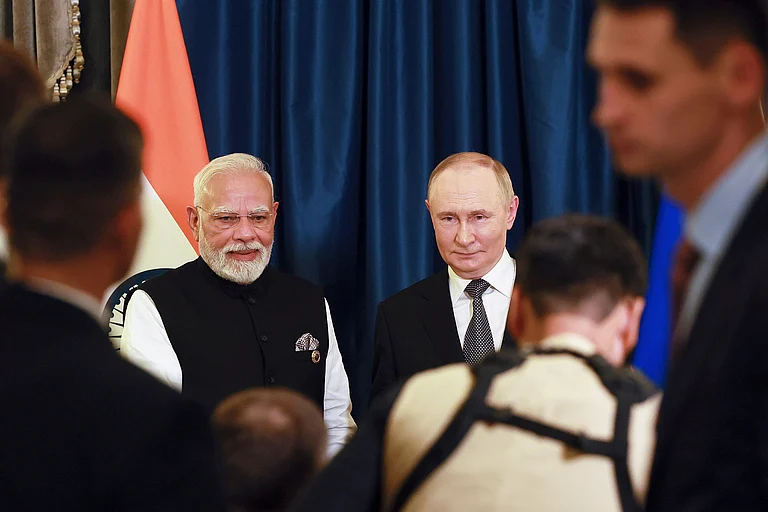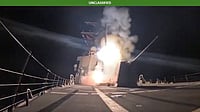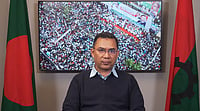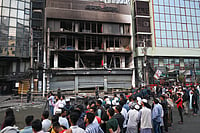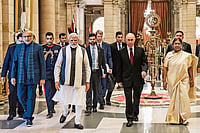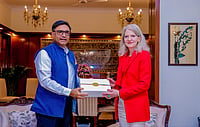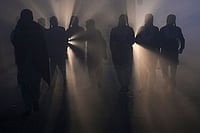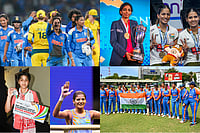Prime Minister Narendra Modi’s upcoming visit to Ukraine on Friday has generated much chatter. Some say it is an attempt to assuage the US and its Western allies outraged over his visit to Russia this July. Predictably, Indian officials denied the charge and have said that the PM’s trip to Poland and Ukraine are part of India’s broader engagement with the world.
Since the 2022 invasion of Ukraine, India has played both sides--not taking a public stand against traditional ally Russia but also engaging with Kyiv. It has sent humanitarian aid to the tune of 135 tonnes of medicine and other essentials to Ukraine and Modi is likely to announce more during his time there.
But the MEA is tightlipped about the trip, with Secretary West Tanmaya Lal telling reporters at a briefing ahead of the two-nation visit beginning on Wednesday that: “I would not like to comment on what the actual outcome will be at this stage. You will come to know at the end of the visit.’’
Lal pushed back when reporters asked if the trip to Ukraine was an attempt to balance India’s ties with Russia with growing strategic convergence with the US. “India has…substantive and independent ties with both Russia and Ukraine. And these partnerships, they stand on their own. I would like to say that this is not a zero-sum game. Prime Minister had also travelled to Russia…Prime Minister has also met President Zelenskyy on a couple of occasions in the last one year or so, and they will now be meeting again in Ukraine,’’ Lal asserted.
Modi lands in Kyiv at a time when the Ukrainian forces have been successful in advancing into Russia’s Kursk region while Russian military is doing well in eastern Ukraine. There has been much speculation, mostly in the media, about India playing peacemaker or facilitator between Russia and Ukraine.
“The Prime Minister’s Ukraine visit is limited in its objectives. Mediation is not on the agenda as that requires a willingness on all sides to explore a solution through dialogue and diplomacy and not military success,” says Kanwal Sibal, former foreign secretary. “Ukraine is not an enemy country for us. We have had good relations with it and our embassy functions there. The visit is an act of balancing our foreign policy. Friends with Russia and open to Ukraine in the interest of peace which India and the global south needs,” adds Sibal.
“I am not sure why the PM is going to Kyiv,” says Ian Hall, professor of International Relations at Australia’s Griffith university and an academic fellow of the Australian India Institute at the University of Melbourne. “India has hinted here and there that it might act as a mediator in the war, but it hasn’t committed itself very seriously to the task. Of course, India has some strategic interests in Ukraine itself, notably in power plants for ships and also in grain and fertilisers. But otherwise, I don’t know what the PM hopes to achieve with this trip,” says Hall. He added that the visit won’t change Western views of India’s stance.
When Prime Minister Modi travelled to Moscow this July, India perhaps did not anticipate the kind of backlash that came from Washington and its allies. After all, Delhi had gotten away with buying Russian oil despite the sanctions and had consistently refrained from criticising Russia’s invasion at the UN Security Council or the General Assembly. However, for the first time the US publicly expressed concern at the Modi-Putin meeting.
Leading the charge was Ukraine’s President Zelenskyy. He was outraged at pictures of Modi and Vladimir Putin greeting each other with a warm hug. “It is a huge disappointment and a devastating blow to peace efforts to see the leader of the world’s largest democracy hug the world’s most bloody criminal in Moscow on such a day,” the Ukrainian leader posted on X.
Eric Garcetti, the affable US Ambassador to India said, “...we respect that India likes its strategic autonomy. But in times of conflict, there is no such thing as strategic autonomy. We will in crisis moments, need to know each other. I don’t care what title we put to it, but we will need to know that we are trusted friends, brothers and sisters, colleagues in times of need, and the next day be acting together.”
India has so far successfully managed to assert its strategic autonomy by playing both sides of the divide--a throwback to the Cold War years. India knows that as a large Asian country with a huge market, the US and the West are looking to New Delhi to checkmate China’s phenomenal rise in Asia and beyond. This also fits in with India’s own security concerns regarding China. The 2020 military confrontation in Ladakh has driven home the point that it needs to stitch up alliances to thwart China’s assertive moves along the LAC. At the moment, India is in no position to take on a rising China by itself. New Delhi is modernising its defence forces, but it will take time for India to catch up with China’s military might.
Aligning with Washington and other powers that are on the same page is good for India. The catch here is that Russia, New Delhi’s traditional ally, is being forced to get closer to China. At a time when international relations are in a flux, with China challenging US hegemony, New Delhi’s policy of playing ball with both sides makes sense for the Modi government. But how long can India continue to do this as it comes under more and more pressure from the US? Though China is America’s principal enemy, Putin, a former Cold War warrior much like US president Joe Biden, is hated in the West.
India cannot afford to annoy US beyond a point. Prime Minister Modi’s visit to Ukraine is to signal to Washington that it is not in any camp but is looking after the self-interest of its billion-plus people.












